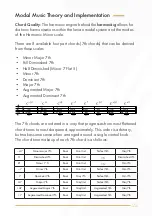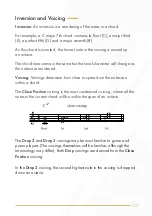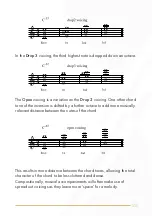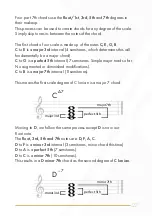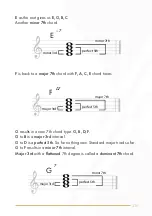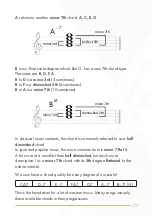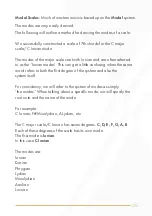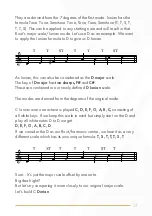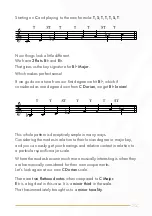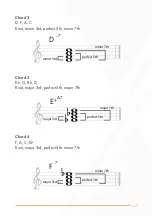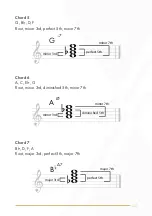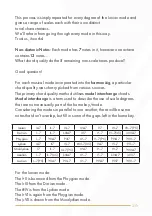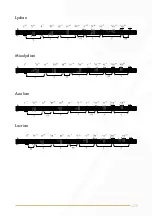
36
This process is simply repeated for every degree of the
Ionian
mode and
gives a range of scales each with their own distinct
tonal characteristics.
We’ll refrain from going through every mode in this way.
Trust us, it works!
Non-diatonic Notes:
Each mode has
7
notes in it, however one octave
contains
12
notes...
What chord quality do the
5
remaining non-scale tones produce?
Good question!
For each musical mode incorporated into the
harmonàig
, a particular
chord quality was cherry picked from various sources.
The primary chord quality method utilises
modal interchange
chords.
Modal interchange
is a term used to describe the use of scale degrees
that are not necessarily part of the home key/mode.
Considering the modes in parallel to one another, there will be some
notes that don’t overlap, but fill in some of the gaps left in the home key.
Ionian
IΔ7
II–7
III–7
IVΔ7
V7
VI–7
VII–7( 5)
Dorian
I–7
II–7
IIIΔ7
IV7
V–7
VI–7( 5)
VIIΔ7
Phrygian
I–7
IIΔ7
III7
IV–7
V–7( 5)
VIΔ7
VII–7
Lydian
IΔ7
II7
III–7
♭#IV–7( 5)
VΔ7
VI–7
VII–7
Mixolydian
I7
II–7
III–7( 5)
IVΔ7
V–7
VI–7
VIIΔ7
Aeolian
I–7
II–7( 5)
IIIΔ7
IV–7
V–7
VIΔ7
VII7
Locrian
I–7( 5)
IIΔ7
III–7
IV–7
VΔ7
VI7
VII–7
For the Ionian mode:
The II is borrowed from the Phrygian mode.
The III from the Dorian mode.
The #IV is from the Lydian mode.
The VI is again from the Phrygian mode.
The VII is drawn from the Mixolydian mode.


